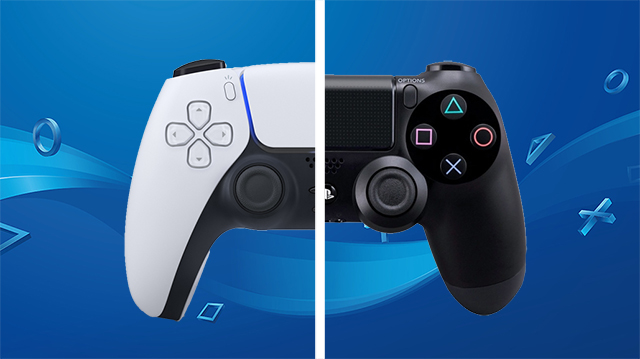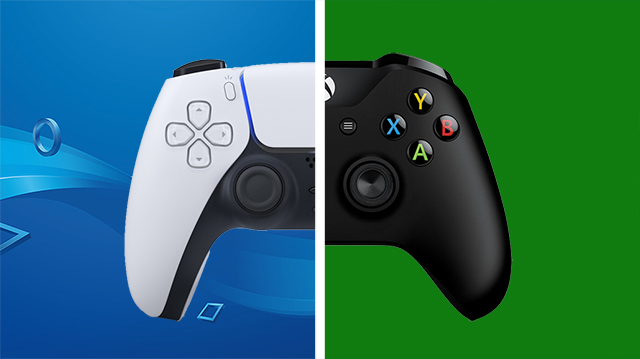Sony has shown us the actual box yet, but the company finally revealed what the controller will look like. Veering away from the DualShock name, Sony is calling this new hunk of plastic the DualSense. And instead of being an iterative controller and essentially another DualShock, Sony seems to have finally evolved and created a controller that has learned from the past while also embracing its biggest competitor.
Correcting past mistakes

The DualShock 4 was Sony’s best controller, but it wasn’t without its issues. The battery life was mediocre, it was too small for some people, and the light bar seemed unnecessary on the back. It drained more juice and you could only see it as it was reflecting back from the TV. How useful.
ALSO: PS5 Adaptive Triggers | How does the DualShock 5’s haptic feedback work?
The DualSense is thankfully addressing those sticking points or at aware of them. Sony didn’t outright say that the battery would be better, but instead said it “took thoughtful consideration into ways to maintain a strong battery life.” Hopefully, Sony’s vision of “strong battery life” is comparable to what actual strong battery life is. Regardless, it’s going to be hard to outmatch the PS4 controller in terms of battery capacity.
Granted that the adaptive triggers aren’t more draining, the lack of a big controller light might help it keep a charge anyway. Sony has integrated it more evenly into the controller itself, meaning there isn’t just one big light in the front that looks tacky by comparison. Some might debate the usefulness of this triangular beam, but it does help with multiplayer and if it’s going to be there, this is probably the most seamless and subtle way to do it.
Looking at its competition

Although the light bar was only on the DualShock 4, Sony has always faced criticism for the smaller size of its pads. Thankfully, the DualSense appears to be just a bit bigger than its predecessors and might even be inspired by the Xbox’s controller. These relatively larger gamepads are probably more welcoming, as people seem to complain more that Sony’s controllers are too small rather than saying Microsoft’s are too big (although Microsoft seems to trying to make its controllers better for tinier hands). Hopefully, it’ll still be comfortable for those with tiny mitts and be able to court those with giant sausage fingers.
But, while it seems Sony will never embrace offset sticks to some people’s chagrin, it also seems to have taken a page from Microsoft with its bumpers. The PlayStation bumpers and triggers have always had just a bit of plastic separating them. The Xbox bumpers and triggers have always laid right on top of each other with no room in between. Along with larger L1 and R1 buttons that also might help those with big paws, this should mean that they are easier to hit like the Xbox’s bumpers without their annoying click and failure to actually press in that far. Regular buttons, like L1 and R1, are superior in that regard as they do not click and press in when you, well, press them.
Looking forward

Sony also seems to have looked forward and taken natural steps forward. The USB-C port is the biggest new addition, as it slowly moves us to the standard and superior USB method. It’s the same cable that your Switch and phone probably use and that ubiquity is where USB should have been in the first place.
The adaptive triggers and haptic feedback feature are also a substantial step forward because of how most games use vibration and the triggers. They might not completely alter how you play games, but they do give the controller an identity and, when taken as a whole with everything else, result in a controller that has looked forward for inspiration. The microphone is also a solid touch, but aside from making in-game speech more accessible and possibly popping up in Kojima’s next game, it likely won’t be be the most important feature.
The DualSense’s strengths aren’t just made up from other hardware or the weak areas of the DualShock 4 as many of the DualSense’s best parts are straight from its predecessor. The distinctly carved out D-pad, useful Create button, and narrow yet effective triggers are all ripped almost wholesale from the PS4’s native controller. Bringing over what works while also taking cues from your competition and looking ahead are what make the DualSense worth getting excited over even before we even put our dirty hands on it. Showing the box first would have been underwhelming because it would likely just be another rectangle. The controller is not only more useful, but also more exciting and Sony proved that with its impressive new PS5 pad.







